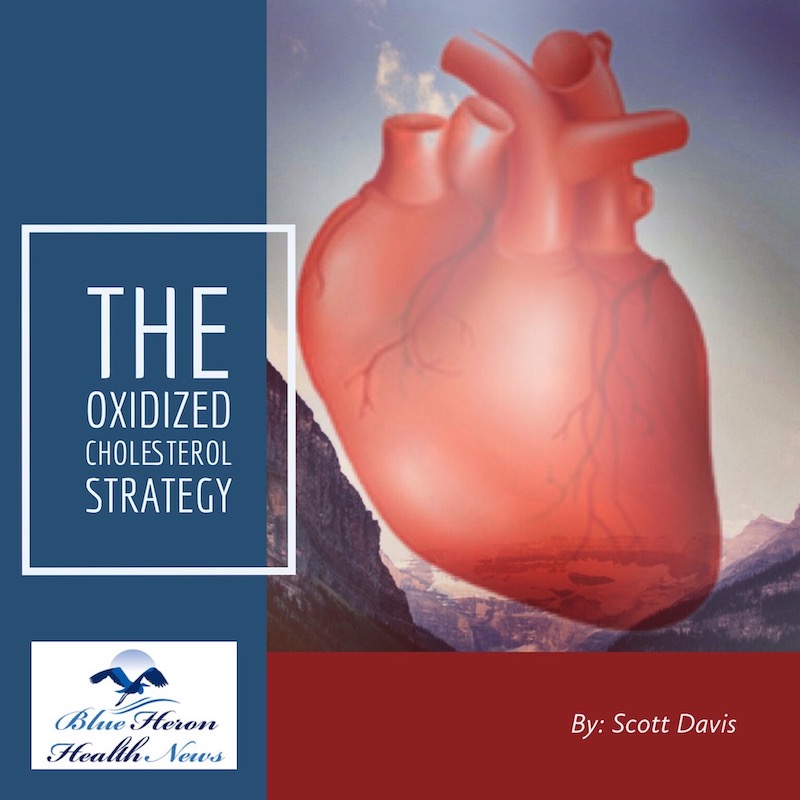
The Oxidized Cholesterol Strategy By Scott Davis is a well-researched program that reveals little known secret on how to tackle cholesterol plaque. This program will tell you step by step instructions on what you need to completely clean plaque buildup in your arteries so as to drop your cholesterol to healthy level. It also helps to enhance your mental and physical energy to hence boosting your productivity.
How do cooking methods affect the levels of oxidized cholesterol in food?
Cooking methods can significantly influence the levels of oxidized cholesterol in food, particularly in foods high in cholesterol such as meat, eggs, and dairy products. Oxidized cholesterol (oxysterols) forms when cholesterol in foods is exposed to heat, light, or air, and is linked to various health risks, including cardiovascular disease. The extent to which cooking methods increase oxidized cholesterol levels depends on factors such as the type of cooking, temperature, and duration of cooking. Here’s how different cooking methods affect oxidized cholesterol levels:
1. High-Heat Cooking Methods
- Frying (Deep Frying or Pan Frying):
- Impact: Frying, especially deep frying, is one of the cooking methods most likely to increase oxidized cholesterol levels. The high temperatures used in frying can lead to the oxidation of cholesterol in foods like meat, eggs, and dairy products. Additionally, using oils that are high in unsaturated fats and prone to oxidation further promotes the formation of oxysterols.
- Duration and Temperature: The longer food is fried and the higher the temperature, the more cholesterol oxidation occurs. For example, frying meat or eggs at high temperatures for extended periods can significantly raise oxidized cholesterol levels.
- Grilling or Broiling:
- Impact: Grilling and broiling, which involve cooking food at high temperatures with direct exposure to heat, can also lead to an increase in oxidized cholesterol. The combination of high heat and exposure to oxygen promotes cholesterol oxidation, particularly on the surface of meats.
- Direct Heat Exposure: Grilling over an open flame can cause significant oxidation, especially in fatty cuts of meat where cholesterol is more concentrated.
- Roasting or Baking:
- Impact: Roasting or baking at high temperatures for prolonged periods can increase the oxidation of cholesterol in foods, particularly if the food is exposed to dry heat. However, roasting at lower temperatures and for shorter durations can reduce the formation of oxidized cholesterol compared to other high-heat methods like frying or grilling.
- Temperature Control: Lowering the cooking temperature can help minimize the formation of oxysterols.
2. Low-Heat Cooking Methods
- Boiling:
- Impact: Boiling tends to result in lower levels of oxidized cholesterol compared to high-heat cooking methods. This is because water conducts heat more gently and evenly, and boiling generally occurs at lower temperatures (around 100°C or 212°F), reducing the risk of cholesterol oxidation.
- Eggs and Meat: Boiling eggs or poaching meat is less likely to cause cholesterol oxidation than frying or grilling.
- Steaming:
- Impact: Steaming is one of the cooking methods least likely to increase oxidized cholesterol levels. Like boiling, it uses lower temperatures and prevents direct exposure to high heat, reducing the oxidation process. Steaming also preserves the nutritional quality of food and minimizes fat oxidation.
- Food Integrity: Steaming keeps the cholesterol in its natural state without exposing it to high levels of oxygen or heat, which reduces oxidation risk.
- Slow Cooking (Crockpot or Sous Vide):
- Impact: Slow cooking methods, such as using a crockpot or sous vide, involve cooking food at lower temperatures for extended periods. These methods limit the formation of oxidized cholesterol by avoiding high temperatures and reducing oxygen exposure. Sous vide, in particular, involves vacuum-sealing food, further minimizing oxidation.
- Oxidation Risk: The lower and controlled temperatures in slow cooking help keep oxidation levels lower than with high-heat methods like frying or roasting.
3. Microwaving:
- Impact: Microwaving food tends to result in lower levels of oxidized cholesterol compared to high-heat methods like frying or grilling. This is because microwaving typically heats food quickly and at lower temperatures. However, the risk of oxidation may increase if food is microwaved for prolonged periods or at very high settings.
- Short Cooking Times: Microwaving for short periods helps limit cholesterol oxidation, particularly in meats and eggs.
4. Stir-Frying:
- Impact: Stir-frying involves cooking food quickly over high heat but often for shorter durations than deep frying. While stir-frying can lead to some cholesterol oxidation, the shorter cooking time may limit the formation of oxysterols compared to other high-heat methods.
- Controlled Exposure: Stir-frying with antioxidant-rich oils (such as olive oil) and vegetables may help reduce oxidation.
Factors Influencing Cholesterol Oxidation:
- Cooking Temperature: The higher the temperature, the greater the risk of cholesterol oxidation. Cooking at moderate to low temperatures helps reduce the formation of oxidized cholesterol.
- Cooking Duration: Longer cooking times increase the exposure of cholesterol to heat and oxygen, promoting oxidation.
- Oxygen Exposure: Oxidized cholesterol forms more readily when cholesterol is exposed to both heat and oxygen. Cooking methods that minimize exposure to air (like sous vide or steaming) reduce oxidation.
- Type of Food: Foods with higher cholesterol content, such as red meat, poultry, eggs, and dairy, are more prone to oxidation during cooking.
Conclusion:
Cooking methods that use high temperatures, such as frying, grilling, and roasting, significantly increase the levels of oxidized cholesterol in foods. In contrast, lower-heat methods such as boiling, steaming, and slow cooking result in lower cholesterol oxidation. To reduce the risk of consuming oxidized cholesterol, it is advisable to choose cooking methods that use moderate heat and limit cooking times.

The Oxidized Cholesterol Strategy By Scott Davis is a well-researched program that reveals little known secret on how to tackle cholesterol plaque. This program will tell you step by step instructions on what you need to completely clean plaque buildup in your arteries so as to drop your cholesterol to healthy level. It also helps to enhance your mental and physical energy to hence boosting your productivity.